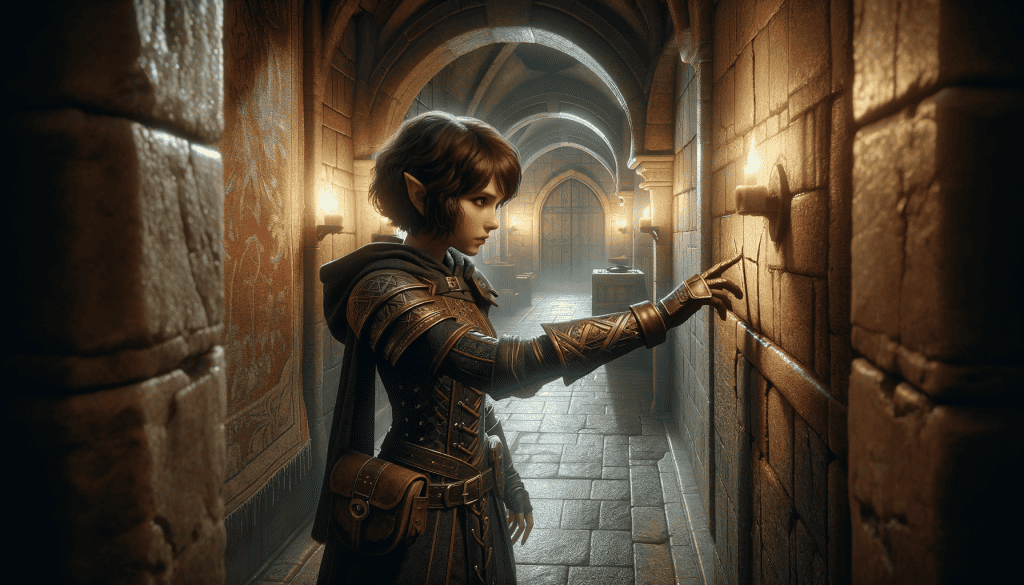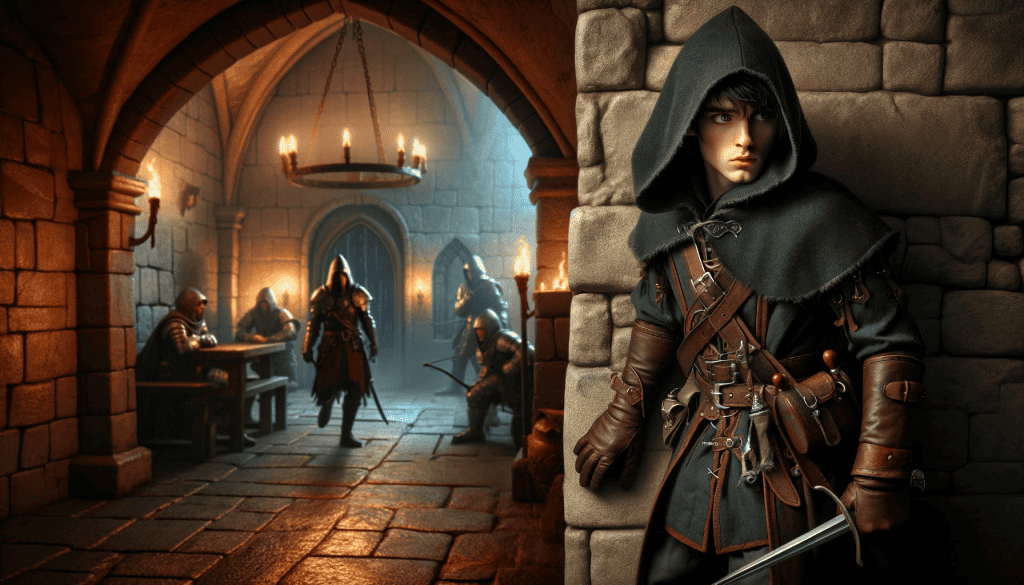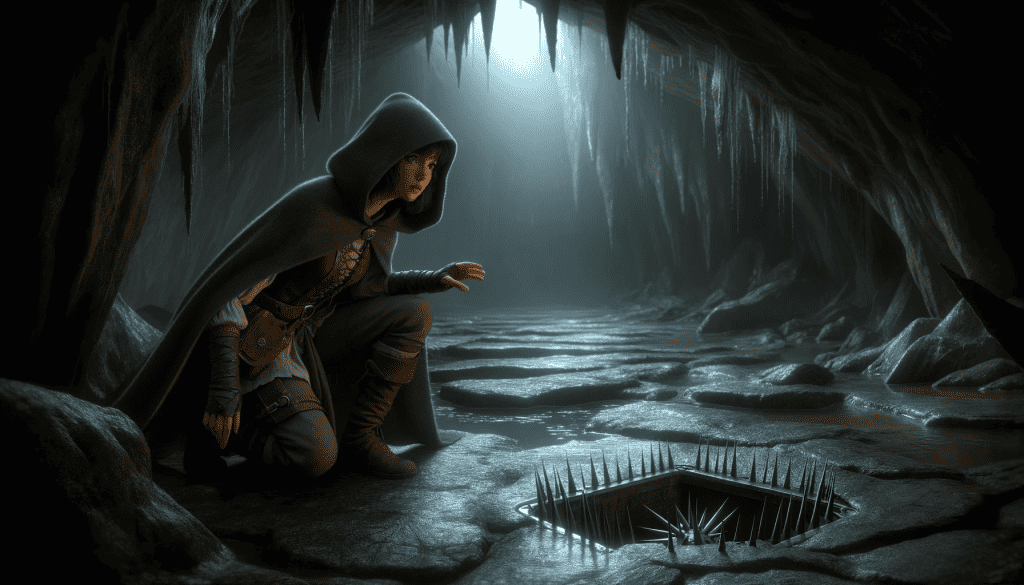How Does Passive Perception Work in 5e D&D
Passive Perception is a valuable tool for Players and DMs alike. It allows you to make Perception checks without the need for Players to roll it every time. Officially, passive Perception is called passive Wisdom (Perception) in books like The Player’s Handbook. The Player’s Handbook also talks about passive checks (p. 175) though only ever gives Perception as an example.
Perception will be one of the most used skills during your D&D adventure. I will be explaining what Perception is and how to use it passively. As a note, while this article focuses on how you use passive Perception, you can apply the same game mechanics to something like passive Insight or passive Arcana.
What is Perception?
Perception is about a Player’s or an NPC’s overall awareness. You could notice the smell of a delicious food stand nearby, a mysterious figure slipping through the crowd, or the feeling of your coin pack getting lighter.
You might only think of sight when dealing with Perception checks, but consider other senses like smell, touch, and even taste! Some creatures or NPCs may have special abilities that increase Perception checks, such as a heightened sense of smell or the ability to see invisible creatures.
Storytime: A friend of mine once wanted to play as a blind Monk. Being blind meant that she would always fail sight-based perception checks. As compensation, the DM gave her character a bonus on sound and touch-based perception.

Perception VS Investigation
Perception and Investigation are often compared to each other. I would say the main difference between the two is Perception shows you WHAT something is, while Investigation helps you understand WHY something is. The two also use two separate Ability Scores.
Ability and Skill Scores
Perception is a skill that is based on the Player’s Wisdom Score. Wisdom also affects Animal Handling, Insight, Medicine, and Survival skills. A character’s ability scores show how good a character is at certain things. This means that the higher your character’s ability score is, the higher your ability modifier will be for skill checks.
If you want to learn more about what ability scores are and to determine your scores, check out my guide on how to roll for your character’s stats.
DM Tip: Always consider what Ability is best for a situation. You may use Intelligence to help you navigate a city, but Wisdom helps you tell the safe parts from the dangerous parts of a city. Let Players get creative with how they might use their Abilities!
Skills are an extension of the ability score. Most non-attacking options may fall under one of the Player’s skills. When making a character, you will have the opportunity to give yourself proficiency or expertise in different skills. Proficiency and expertise give a bonus to your skills, whether you use them actively or passively!
What is Passive Wisdom?
As I said before, the term “passive Perception” is called “passive Wisdom” in official books. What makes it passive? Passive means that it’s how good a character is at something without trying. Passive Wisdom is the awareness and intuition of a character at any given moment.
Passive Wisdom (Perception) is how well they notice through their senses. This suggests that there could be passive Wisdom (Insight) showing how well someone is at noticing lies.
DM Tip: You can use passive checks for other abilities too! If a Player is a strong barbarian, you might allow them to pick up a heavy barrel without needing to roll, but you might have the weak wizard roll because you don’t think their passive strength is good enough.

Passive Checks
Most checks use a d20, so we calculate passive checks by adding 10 to whatever normal modifiers you would add to the roll. Passive checks are normally a tool for the DM to use to help streamline gameplay.
Passive checks allow things to happen without your Players having to roll anytime they want to do something. Perception is the first thing that Players use to see a new place. DMs can use a Player’s passive Perception as a baseline for what the players notice when they first enter a room.
Passive Skills and Skill Floors
So, if passive Perception is so useful, what about other skills? Why roll at all if I could use a +10 instead? Well, some DMs may consider letting players use passive skills instead of having them roll.
Generally, DM’s separate ability checks into different difficulty classes. Passive checks let Players pass easy DCs without needing to risk a roll. Every DM might have a different rule when it comes to passive ability checks. ALWAYS follow the DM’s Guidance, as there are no hard rules for passive checks outside of Wisdom.
Perception checks are a bit more complicated since players are always perceiving. Jeremy Crawford talks about passive Perception in an episode of Dragon Talk around the 22-minute mark. He says that passive Perception is always on unless the character is unconscious. Passive Perception of 10 + their modifiers will still be the floor of their Perception skill even if they roll below a 10 on an active Perception check.

Using Passive Perception
For Players
Passive Perception is often used by Player characters for the following actions:
- Noticing hidden threats, especially while traveling
- Detecting secret doors (but not opening them)
- Feeling a pickpocket
- Seeing a trap before it is triggered
- Being awoken while asleep
- Tasting off flavors
Passive Perception scores can be useful in situations where a character might not be actively looking for danger. This could be when they are traveling through a dangerous area, talking with an NPC who might deceive them, or eating at a party full of political enemies.
The simple way to calculate passive perception is:
10 + any modifiers that you would use for Perception
You can also add 5 for advantage and subtract 5 for disadvantage. It’s often up to the DM to decide when a player has advantage or disadvantage on passive Perception checks.
If you are in a loud crowded area, a DM may give disadvantage on sound-based passive Perception. However, in an empty cathedral, they may give you advantage on sound-based passive Perception.
Player Tip: When traveling as a group, be careful, because if you choose to move at a fast pace you will take a -5 penalty to your passive Perception! So you’ll have to choose between safety or speed.
Improve Your Passive Perception
Improving your passive Perception can give your party an edge in finding secrets or helping to avoid surprise attacks. Here are a few ways to up your passive Perception score:
- Improving your Wisdom ability score can increase the modifier that impacts perception
- Magic items that help perception, like the Eyes of the Eagle
- Magic items that increase wisdom, like the Ioun Stone of Insight
- Taking that Observant feat gives you a +5 bonus to passive Perception
- Gaining proficiency or expertise in Perception

It is normally up to the DM to decide what you see during a Player’s passive Perception check. Even if the DM is conservative with how they use passive Perception, most of these methods will help improve your active Perception too.
Many things go into passive Perception. Here is a more complicated formula that can show you every piece that might go into passive Perception (depending on the character, most of the variables could be 0):
10 + (Wisdom Modifier) + (Perception Proficiency or Expertise bonus) + (Bonus from the Observant feat) + (Class bonus to Perception) + (Race bonus to Perception) + (Item Bonus to Perception) + (5 for advantage or -5 for disadvantage) – (5 if traveling at a fast pace)
For Monsters and NPCs
Passive Perception works the same for monsters and NPCs as it does for players. The DM will need to check passive Perception to decide if the pickpocketing Rouge gets caught.
Here is a list of actions the Players might do that would need a DM to consult passive Perception.
- Pickpocketing NPCs
- Preparing an ambush
- Sneaking through a guarded dungeon
- Speaking in the presence of a non-magically asleep NPC or Monster
DM Tip: Get creative! If you are running a campaign focusing on espionage, you may want to use passive Perception as a trigger for NPCs to begin actively perceiving, giving Players a chance to hide again.
You can calculate passive Perception the same way it is done for players. Often, passive Perseption is on a monster stat block. If it’s not on the stat block, or it’s for something without a stat block, you can calculate it like this:
10 + Wisdom Modifier + Any Perception bonuses
You can also add or subtract 5 for advantage and disadvantage, which also affects preset passive Perception. The challenge rating of an NPC or Monster could also help you determine or edit its passive Perception, you can learn more about challenge rating here.

Final Thoughts
Passive Perception is a great tool for DMs to use to help keep the game running smoothly and move the narrative forward without needing to stop and roll for things that should be easy to see. As a Player, having high passive Perception can help you easily see secrets, but it’s always up to the DM to determine what you see without actively looking.
I hope you enjoyed the article, and please comment with any opinions or things you think I missed. You can also share this with a DM who you wish would use passive Perception more!

